Senate Floats Auction of 1000s of Acres of Morongo Basin Public Land
Land near Section 6 and other local landmarks placed on BLM land privatization chopping block
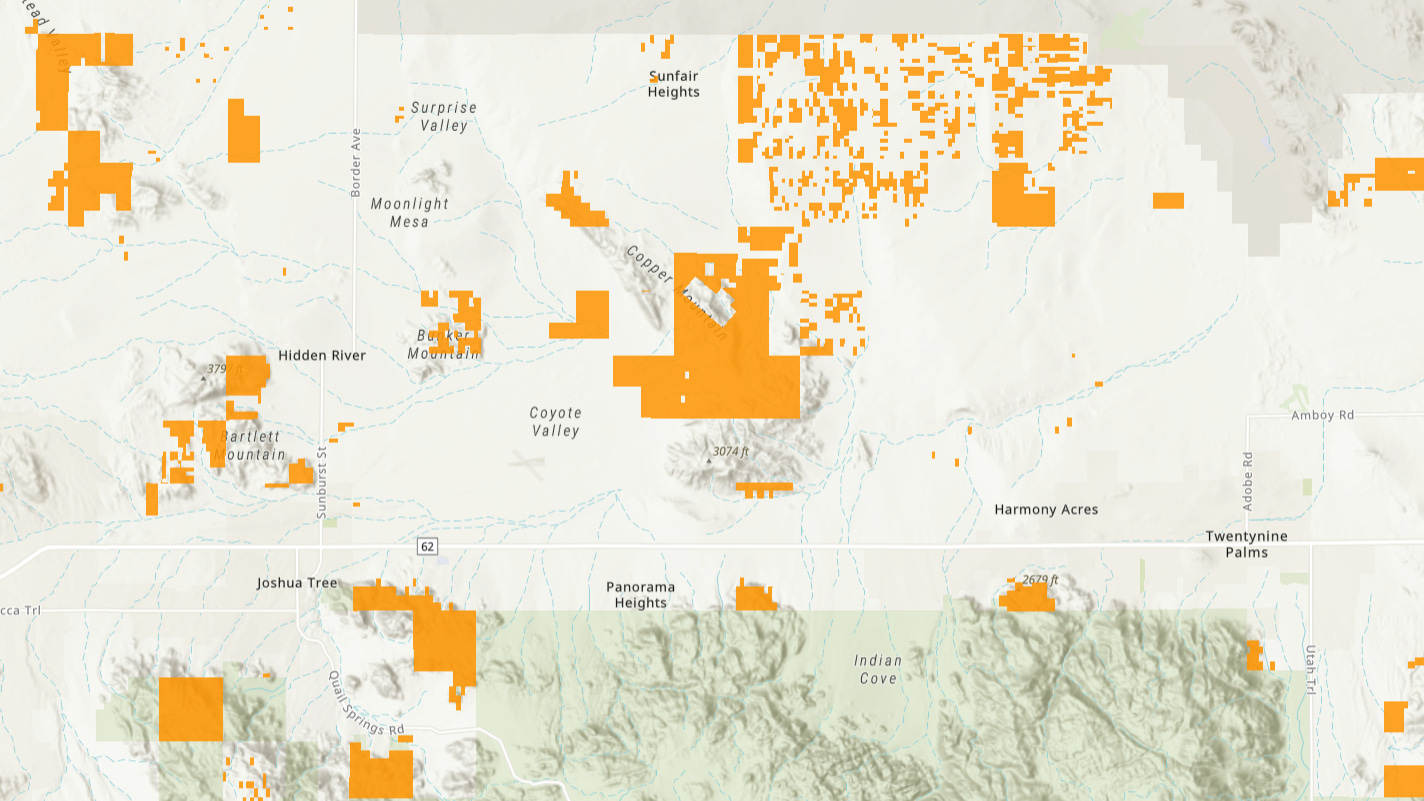
What would 29 Palms and the Morongo Basin be like if the tens of thousands of acres of BLM (Bureau of Land Management) land in and around it were suddenly sold to the highest bidder?
That's definitely not a question that anyone living here in the Hi-Desert has much considered for at least 50 years. But per recent articles covering the Republican-controlled Senate's proposed budget reconciliation bill released last week, residents could soon be facing just such a reality.
There are about 232,773 acres of BLM-managed public land in the Morongo Basin and about 5,802,290 acres of BLM-managed public land in San Bernardino County.1
While the City of Twentynine Palms itself contains little BLM land, the City's sphere of influence, including Desert Heights and part of Wonder Valley, contains tens of thousands acres — and the Morongo Basin as a whole contains many, many thousands of acres more.
As this map from Wilderness.org shows, much of Wonder Valley, east of 29 Palms, could be sold off. Wonder Valley contains hundreds of square miles (!) of BLM land that would suddenly be up for auction.
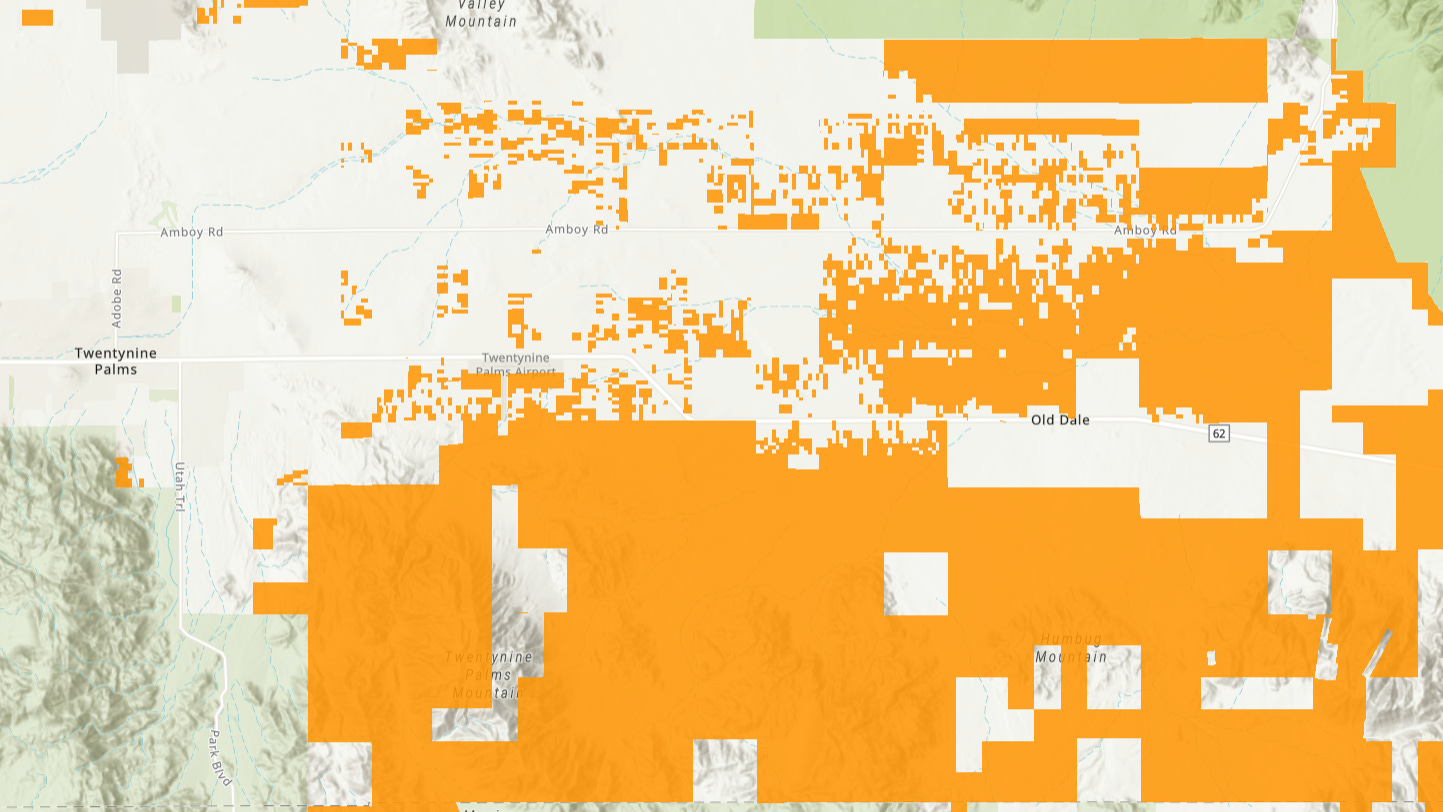
The Desert Heights area, encompassing 100 square miles northwest of 29, doesn't fare much better. Like Wonder Valley, Desert Heights is a patchwork quilt of 1950s jackrabbit homestead parcels, some of which the hearty homesteaders never claimed when the parcels were originally offered by BLM, while other parcels reverted to BLM ownership after homesteaders failed build a cabin to prove up their claim.
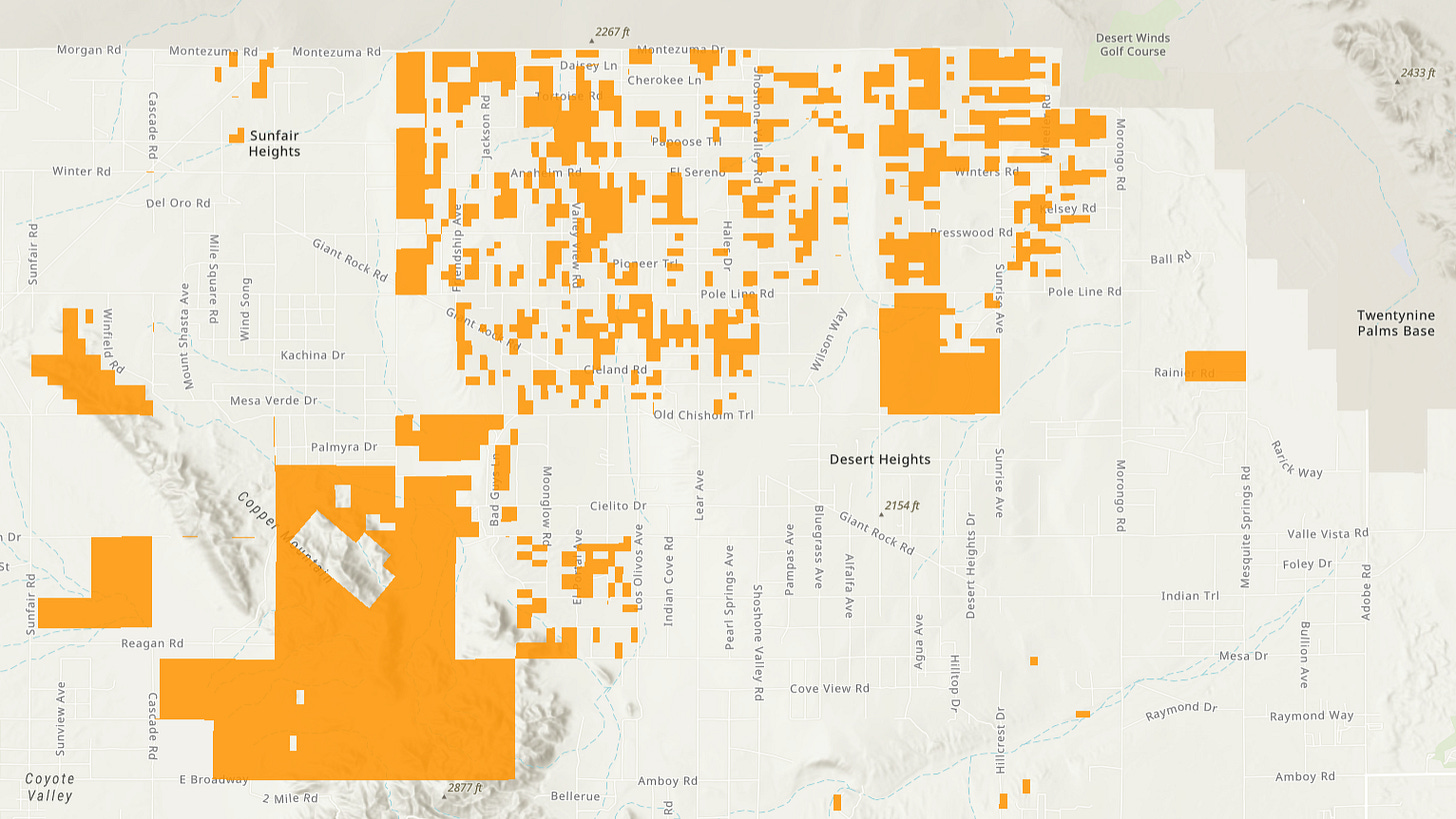
Moreover, if this legislation is approved, sizable tracts of BLM land in Joshua Tree could be auctioned as well. This includes hundreds of acres north and east of Section 6, aka the Desert View Conservation Area, a 605-acre Joshua Tree nature preserve beloved by locals, which has been owned and managed by San Bernardino County since 1962.
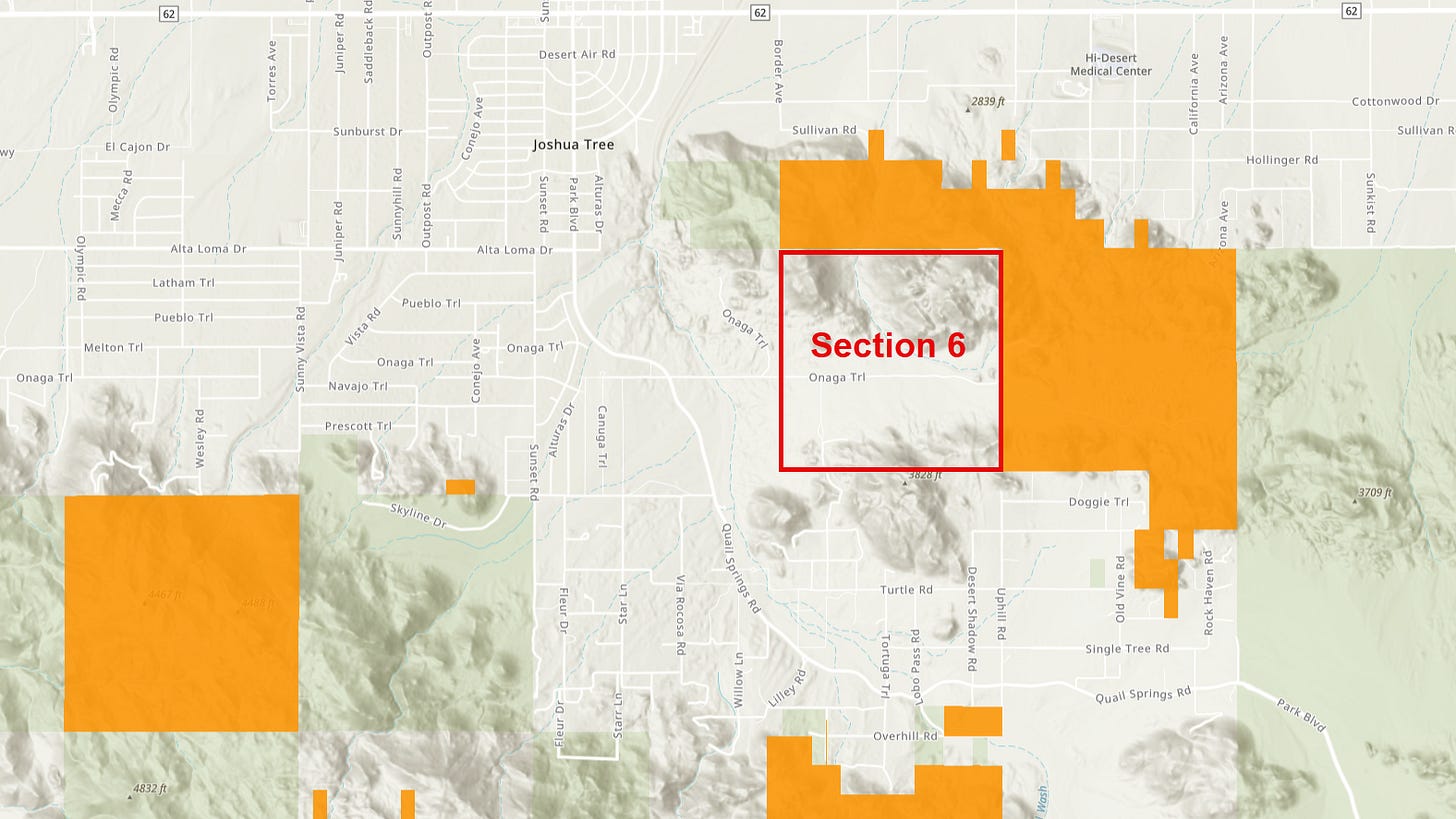
Why this sudden rush to sell off public lands? The Senate bill's authors claim its purpose is to promote housing:
Sen. Mike Lee (R-Utah), who chairs the Senate Energy and Natural Resources Committee, said in a statement Wednesday that the draft legislative text would turn “federal liabilities into taxpayer value, while making housing more affordable for hardworking American families.”
But here in the Hi-Desert, the purported rationale of fostering more housing rings hollow. Not that we don't need it — and there's little doubt that flooding the market with thousands of acres of formerly government-owned vacant land would indeed drive down the price of local vacant land. But the trouble is, there's already plenty of privately owned vacant land for sale here at relatively bargain prices. Lack of cheap vacant land is far, far down the list of reasons for local housing unavailability and unaffordability.
Notably, the impulses likely driving this land auction gambit don't extend to local zoning, taxes or land regulation. Fantasies of freeing the market run up against reality: most or all of the auctioned land is already zoned. Buyers won’t be getting a piece of do-whatever-you-want-ville. Auctioned parcels can be expected to maintain the very same zoning — for example Resource Conservation zoning as shown below — that they’re already assigned.
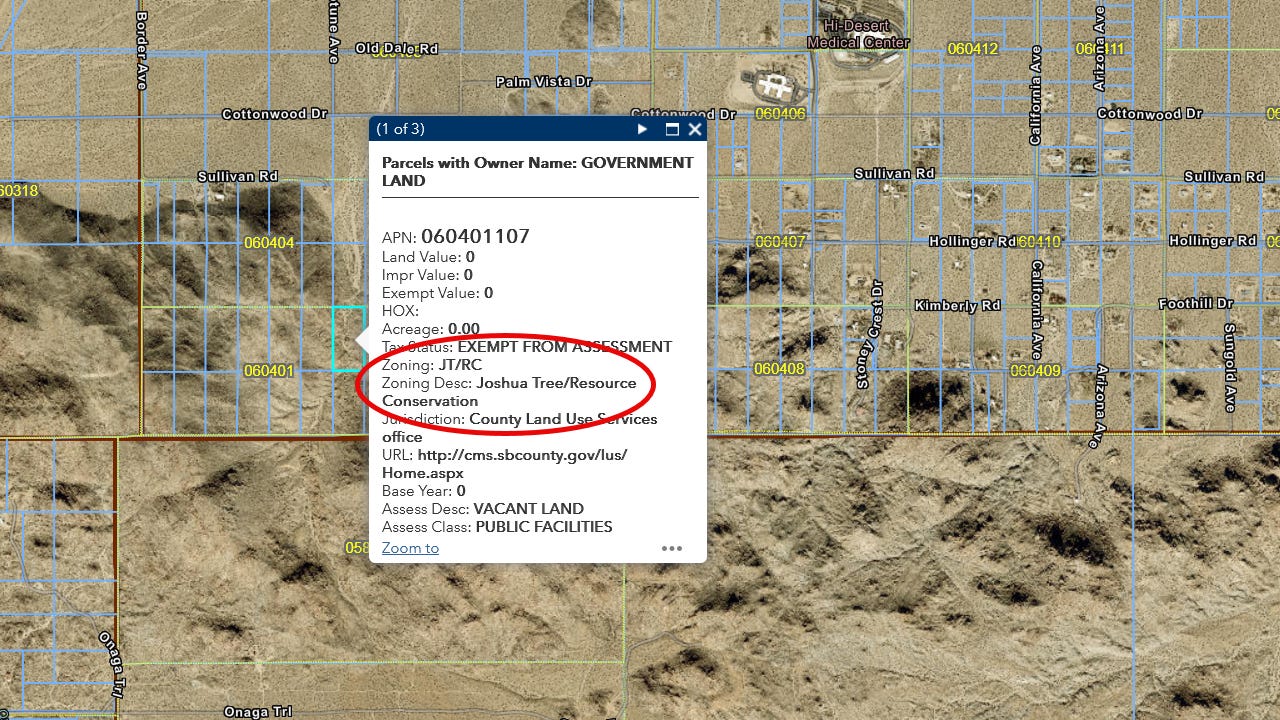
You might guess cities and counties would greet with glee the prospect of thousands of "new" parcels of land in their jurisdictions to begin newly taxing, but things aren’t that simple. San Bernardino County receives millions of dollars yearly from the federal government under the PILT Program — “Payments in Lieu of Taxes (PILT) are Federal payments that help local governments offset losses in property taxes due to the existence of nontaxable Federal lands within their boundaries,” per the U.S. Department of the Interior. So while San Bernardino County would gain property tax revenue under a federal land sale scheme, it would likely lose PILT funds.
Finally, there's the fact that little BLM land is buildable — most of it lacks nearby water and electric service. (And sewer? Don't even get me started on sewer.) Per the Wilderness Society's article, "Research suggests that very little of the land managed by the BLM and USFS is actually suitable for housing." Ask anyone who's priced it lately, and they'll inform you that extending utilities nowadays is very costly, often the difference between a project penciling out and not.
So, if tens of thousands of acres of Morongo Basin government land is auctioned but almost none is used for new housing — then what?
You’d be forgiven for hazarding a guess that if this scheme comes to pass, it'll primarily be land speculators, and perhaps an aspiring resort developer or two, who will be vying for a rare fraction of the choicest parcels. There’s little doubt that it’s such entrepreneurs, whether with pockets deep or shallow, who'd have the keenest interest in picking up local BLM land for cheap.
Leave your thoughts in the comments below. Please note that we do not allow anonymous comments. Please be sure your first and last name is on your profile prior to commenting. Anonymous comments will be deleted.
Feel free to share this article!
We want to thank the paid subscribers and individual donors who helped underwrite our 2024 Election reporting and our City Council Candidate Forum. Our reporting isn’t possible without their support.
Want to join them in supporting the work we do? Upgrade to paid!
Per June 17, 2025 email from Public Affairs Specialist at BLM California Desert District, Palms Springs office.


Unlike the homesteading acts, It doesn’t sound like there is any restriction on what can be built. Considering the fact that our board of supervisors happily rubber stamp nearly all CUP applications for commercial use in the 3rd district from speculators and developers, and they stand to lose millions in federal funds if this passes, then yes I can hazard a guess who will be the winners in this. There is a 5 acre BLM parcel next to my property in Landers that would be perfect for housing, all it needs is a water and electric connection, and septic. If the government took a scalpel approach instead of a chainsaw, there is some land that is appropriate for privatizing and residential building. The current administrations, both on the county and federal level give me little hope that they will do it the right way. If infrastructure doesn’t support a resort, it will certainly support “clean energy” projects, like solar and geothermal plants. And mining out in the vaster areas. A strip mine is already seeking approval in a former mining district next to the Mojave Preserve. You don’t know what you’ve got ‘til it’s gone.
More on the land heist from Wes Siler: https://wessiler.substack.com/p/a-simple-guide-to-the-great-public?utm_source=post-email-title&publication_id=232406&post_id=166183047&utm_campaign=email-post-title&isFreemail=true&r=33uty&triedRedirect=true&utm_medium=email